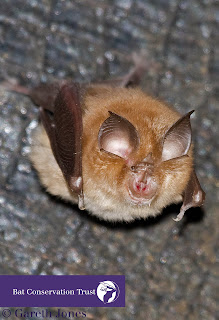 |
©Sarah Thorpe
|
By Tiere Thorpe
(tt.yeah@gmail.com)
Volunteer – Flying Fox
rescuer and rehabilitator
The Casino Heat Stress Event – November 2014
 |
©Sarah Thorpe
|
Q. How many bats are you currently looking after?
 |
| ©Sarah Thorpe |
Q. How do you look after pups in your care?
Flying fox pups that come into our care are usually hypothermic / hyperthermia, often have a maggot load, some abrasions and are emotionally traumatised. Many babies have witnessed their mum’s terrifying and often tragic struggle to survive whether it is from entanglement, power line electrical current or hyperthermia from extreme weather events. The first couple of hours in our care is vital and needs to be handled correctly to stabilise the pup and set it on the road to recovery and ultimately release. Hydration is a key aspect to our initial and ongoing care, as is setting up a routine with consistent foster parents. Flying foxes are not lactose intolerant like many mammals. We feed them full cream cow’s milk with added calcium and glucose supplements.
At around 6 weeks of age, we introduce fruit to
increase the pup’s carbohydrate intake, assist in their growth and to provide
enrichment to these smart little guys. Always trying to imitate nature, this is
offered late in afternoon and evening to encourage nocturnal behaviour. It
would be next to impossible to provide them with a natural diet of nectar,
pollen and native fruits. Apples and
pears are a mainstay for the pups with the occasional melon and grapes added in
for variety. Unfortunately this
predominately fruit diet takes up a large proportion of our donations.
Australian flying foxes have a largely liquid diet and they have evolved to
pulp the fruit between their tongue and rigid palate, extract the juice and
discarding the fruit pulp. Aside from
addressing the never ending appetite of our little charges, we must clean and
sun our pups everyday as mum would in the wild. All this is done in a nurturing bond that
forms between the foster parent and the pup. Just like human children, without love these little ones fail to thrive.
 |
| ©Sarah Thorpe |
A busy 12 weeks will pass quickly and our pups will be
weaned off milk and onto fruit and ready for the next stage of rehabilitation –
crèche. This is where we provide the right environment amongst other flying
foxes minus our emotional involvement. Hopefully by this stage our pups are
becoming emotional independent and confident. They will spend a few weeks with
other like-minded, self assured pups as human contact begins to withdraw and
their innate behaviours emerge – washing and toileting themselves, socialising
and nocturnal food seeking behaviours. This is the time when our volunteers work extremely hard, chopping
copious amounts of fruit to fill little growing bellies (up to 400g per night
per bat).
 |
| ©Sarah Thorpe |
Q. What are the chances of young orphaned bats survival once
they are released?
 |
| ©Sarah Thorpe |
M.L Augee and Denise Ford (1999) Radio-tracking
Studies of Grey-headed Flying-foxes, Pteropus poliocephalus, from the Gordon
Colony, Sydney.
Q. Apart from the current heat wave what other challenges do
bats in Australia face?
There
are many factors forcing our flying foxes to become increasingly urbanised,
placing them in zones of conflict and terror as they attempt to co-exist with
humans.
Evidence
makes it very clear that our flying foxes preferred diet is myrtaceae flowers
and forest fruit. However, with the
increasing clearing of native vegetation and the replacement with commercial
crops, we now see increased conflict between farmers and flying foxes. Despite the fact that our flying foxes
provide an amazing free ecosystem service, recent political and legal changes
(2012) have reduced protection for these vulnerable species. The Queensland and NSW Governments have
reintroduced shooting permits allowing orchardist to inhumanly cull
these animals.
Habitat
clearance also has another effect – it increases the distance between native
food sources and hems in flying fox populations, forcing them to look for other
food sources locally. We have seen this
recently in Sydney, just before spring flowering. We had many rescued flying foxes suffering
from starvation, especially pregnant females, juveniles and the elderly who
have lower fat reserves and the inability to fly greater distances.
Local
governments also have power to disperse flying fox colonies and destroy their
roost sites without assessment or accountability. These regular dispersals are undertaken
using sound, smoke, helicopters and any stress-inducing method to unsettle the
flying foxes from their habitat trees. The dispersal procedure is ongoing and expensive and despite research
showing it is an unsuccessful short or long term control mechanism – sadly it
is still used!
Q. How can
members of the public help with the current tragedy?
Donations
are always very welcome. Sydney Wildlife
does not receive any funding from the government. We rely solely on donations from members of
the public and the generosity of our wildlife volunteers who are all unpaid. Our flying fox rehabilitation is a costly
process, requiring an ongoing commitment from a small but dedicated group of
bat carers within the organisation. The
current Heat Stress victims from Casino have many injuries including ongoing
hydration issues, organ damage, skin abrasions, eye ulcers and wing membrane
damage. Any financial assistance given
to the flying foxes always goes straight to their daily care and medical
expenses.
We
are able to take heat stress donations via the Tolga bat hospital
http://www.tolgabathospital.org/
We
are also listed on the Global Giving website (globalgiving.org ‘Help Baby Bats
Take Flight’) where there is a regular update for those who donate and become
part of our commitment to help this vulnerable species.
Be
a flying fox advocate – educate members of the public about the importance of
flying foxes as keystone species: no other animal does their job; in fact the
survival of many animals relies on flying foxes to do their job each night. They are long range pollinators and seed
disperser of many Australian coastal trees and these gentle night workers are
absolutely essential to the health of our ecosystems and forests (as well as
being incredibly cute and smart J). At the current rate of die-offs, we may sadly
witness this species becoming functionally extinct in our generation. Functional extinction always precedes actual
extinction.
 |
| ©Sarah Thorpe |










.JPG)
.JPG)
.JPG)
.JPG)
.JPG)
.JPG)
.JPG)
.JPG)

.JPG)











